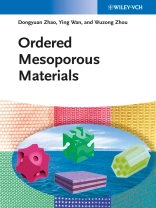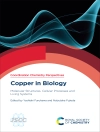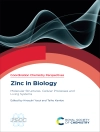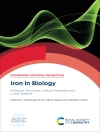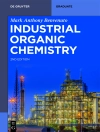Mesoporous materials are a class of molecules with a large and uniform pore size, highly regular nanopores, and a large surface area. This book is devoted to all aspects and types of these materials and describes, in an in-depth and systematic manner, the step-by-step synthesis and its mechanism, as well as the characterization, morphology control, hybridization, and applications, of mesoporous molecular sieves. In so doing, it covers silicates, metal-doped silicates, nonsilicates, and organic-inorganic hybrids.
Although the emphasis is on synthesis, the expert authors also discuss characterization and applications, ranging from catalysis and biochemistry to optics and the use of these materials as templates for nanomaterial synthesis. Both the fundamentals and the latest research results are covered, ensuring that this monograph serves as a reference for researchers in and newcomers to the field.
Tabela de Conteúdo
PREFACE
INTRODUCTION
SYNTHESIS APPROACH OF MESOPOROUS MOLECULAR SIEVES
Synthesis
Hydrothermal Synthesis
Removal of Template
Basic Synthesis
Acidic Synthesis
Nonaqueous Syntheses
Postsynthesis Treatment
Stability of Mesoporous Materials
Pore-Size Control
MECHANISMS FOR FORMATION OF MESOPOROUS MATERIALS
Introduction
Synthesis Pathways
Mesophase Tailoring
Hard-Templating Approach
STRUCTURAL CHARACTERIZATION METHODS
XRD
Electron Microscopy
NMR
Physical Sorption
REPRESENTATIVE MESOPOROUS SILICA MOLECULAR SIEVES
D Mesostructures
3D Hexagonal Phases
Cubic Phases
Disordered Mesostructures
DOPING IN MESOPOROUS MOLECULAR SIEVES
Aluminum Doping
Boron Doping
Gallium and Indium Doping
Germanium and Tin Doping
Transition-Metal Doping
MORPHOLOGY CONTROL
The Methods and Techniques
Typical Morphologies
Magnetically Responsive Ordered Mesoporous Materials
MESOPOROUS NONSILICA MATERIALS
Mesoporous Carbon
Mesoporous Polymers
Mesoporous Nonsiliceous Oxides
Mesoporous Metals
Mesoporous Metal Chalcogenides
Ordered Mesoporous Nonoxide Ceramic Materials
Mesoporous Metal Nitrides, Carbides and Fluorides
ORGANIC GROUP FUNCTIONALIZED MESOPOROUS SILICAS
Synthetic Approaches
Combinatorial Synthesis
Accessibility to the Active Site and Applications
Conclusions
APPLICATIONS OF MESOPOROUS MOLECULAR SIEVES
Catalysts and Carriers
Biology, Separation and Adsorption
Photoelectric Applications
High-Tech Fields Such as Electromagnetism
OUTLOOK
INDEX
Sobre o autor
Dongyuan Zhao obtained his B.S. and M.S. in chemistry from Jilin University, China. He obtained his Ph.D. in 1990 (Jilin University and the Dalian Institute of Chemical Physics). Between 1992 and 1993, he was a visiting scholar at the Department of Chemistry, University of
Regina, and later carried out his postdoctoral research at the Weizmann Institute of Science (1993 – 1994), the University of Houston (1995 – 1996), and the University of California at Santa Barbara (1996 – 1998). He is now a Professor (Cheung Kong Professorship) in the Department
of Chemistry at Fudan University. He was elected an Academician of the Chinese Academy of Science (CAS) in 2007, and as a member of the Third World Academy of Science (TWAS) in 2010. His current research interests include synthesis, structural characterization, and applications
of ordered porous materials, such as mesoporous materials, zeolites, and coordination polymers. He has contributed to approximately 500 international scientific publications.
Ying Wan obtained her academic degrees in Industrial Catalysis at the East China University of Science and Technology, receiving her Ph.D. in 2002 under the supervision of Professor Jianxin Ma. She then joined the Shanghai Normal University, where she was awarded a position
as a Professor in 2006. In 2005 – 2007, she carried out her postdoctoral research at Fudan University working with Professor Dongyuan Zhao. Her current research focuses on the application of mesoporous materials in environmental catalysis and energy conversion. She has contributed approximately 60 international scientific publications with more than 2600 citations.
Wuzong Zhou, obtained his BSc in 1982 (Fudan University, Shanghai) and his Ph D in 1988 (University of Cambridge) under the supervision of Professor Sir John M. Thomas and Dr. David A. Jefferson. He then pursued his research in Cambridge for 11 years as a Research Assistant,
Research Associate, Research Fellow of Queens – College (1987 – 1990), and Assistant Director of Research (1993 – 1998). In 1999, he moved to St. Andrews University to set up a new Electron Microscopy Laboratory. He currently holds a Professorship of Chemistry there. His research interests are in solid-state chemistry in general and high-resolution transmission electron microscopy in particular. He has published more than 290 international scientific papers, including over 10 HRTEM-related review articles/-book chapters.
